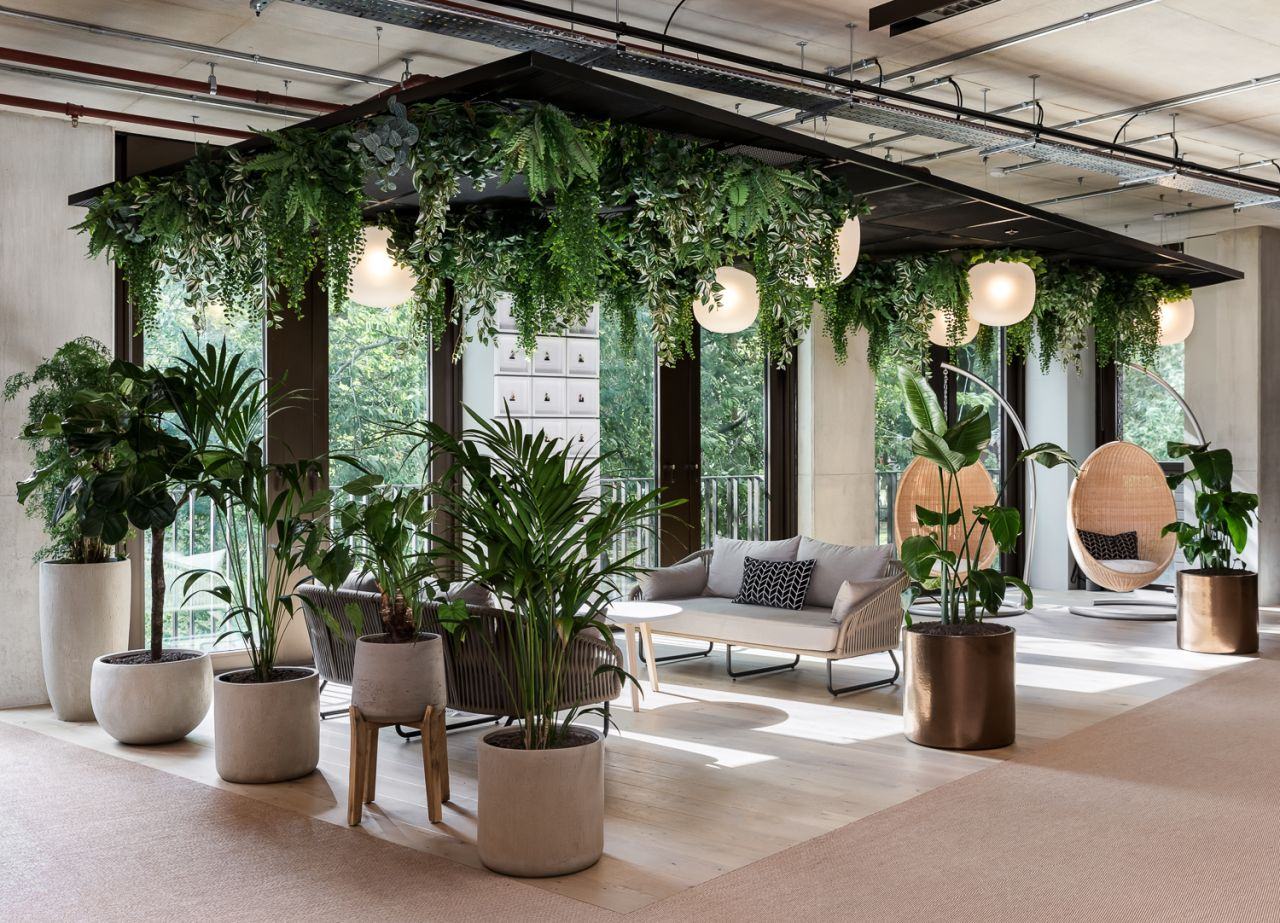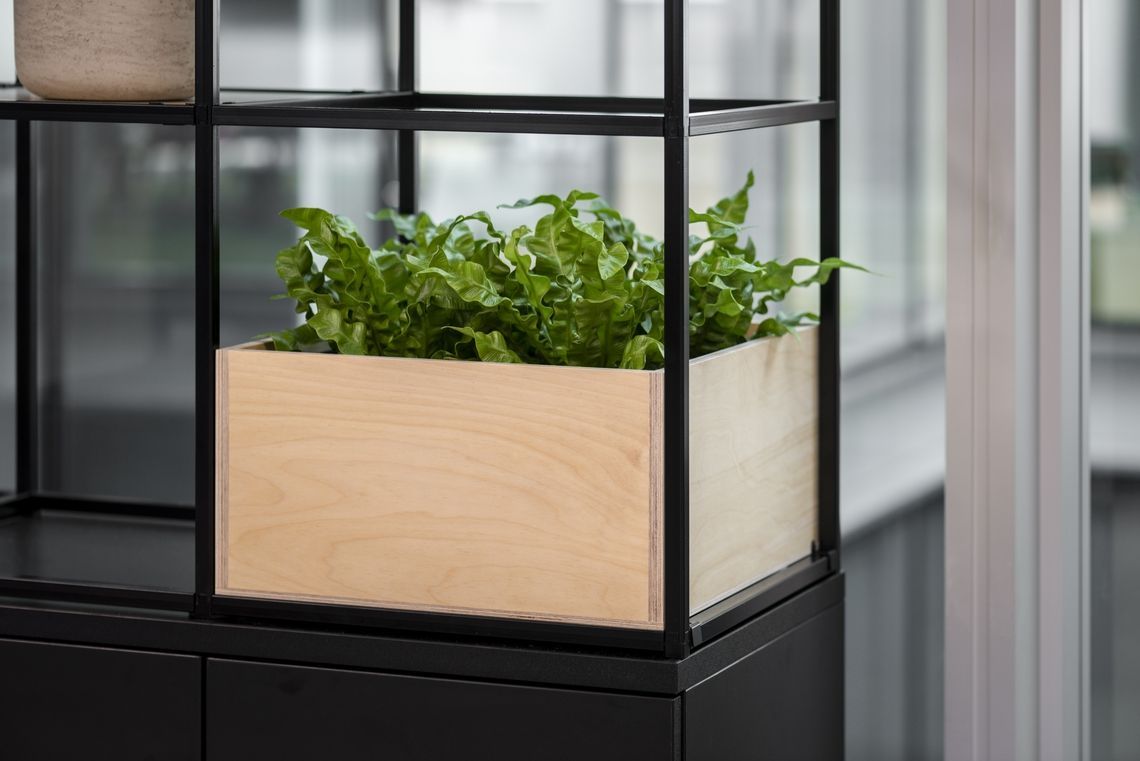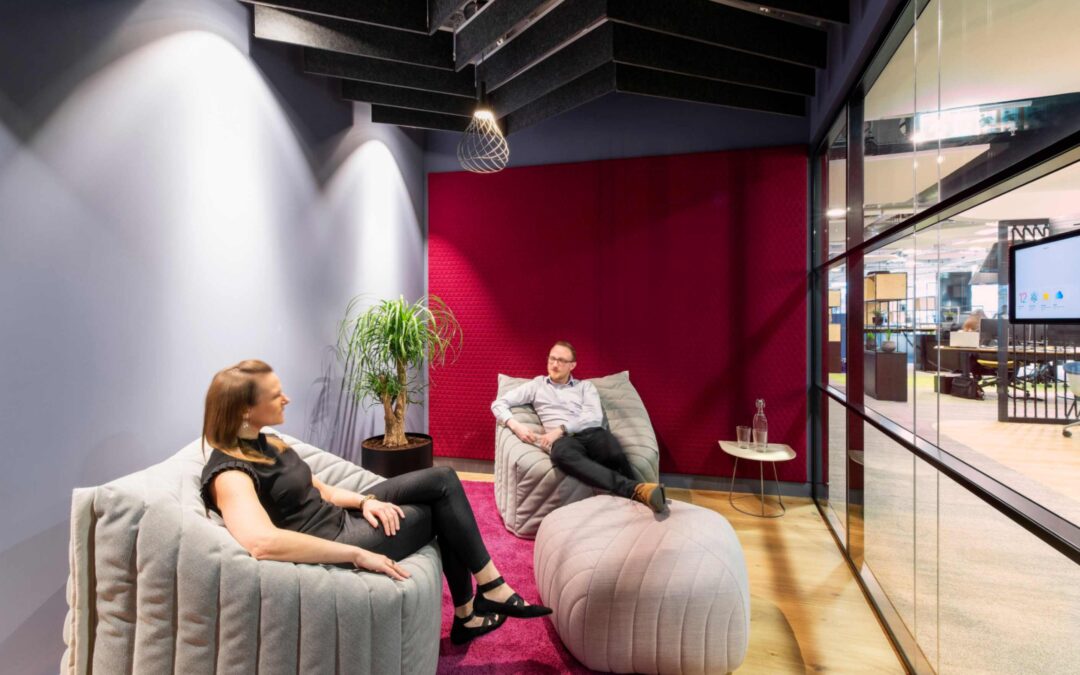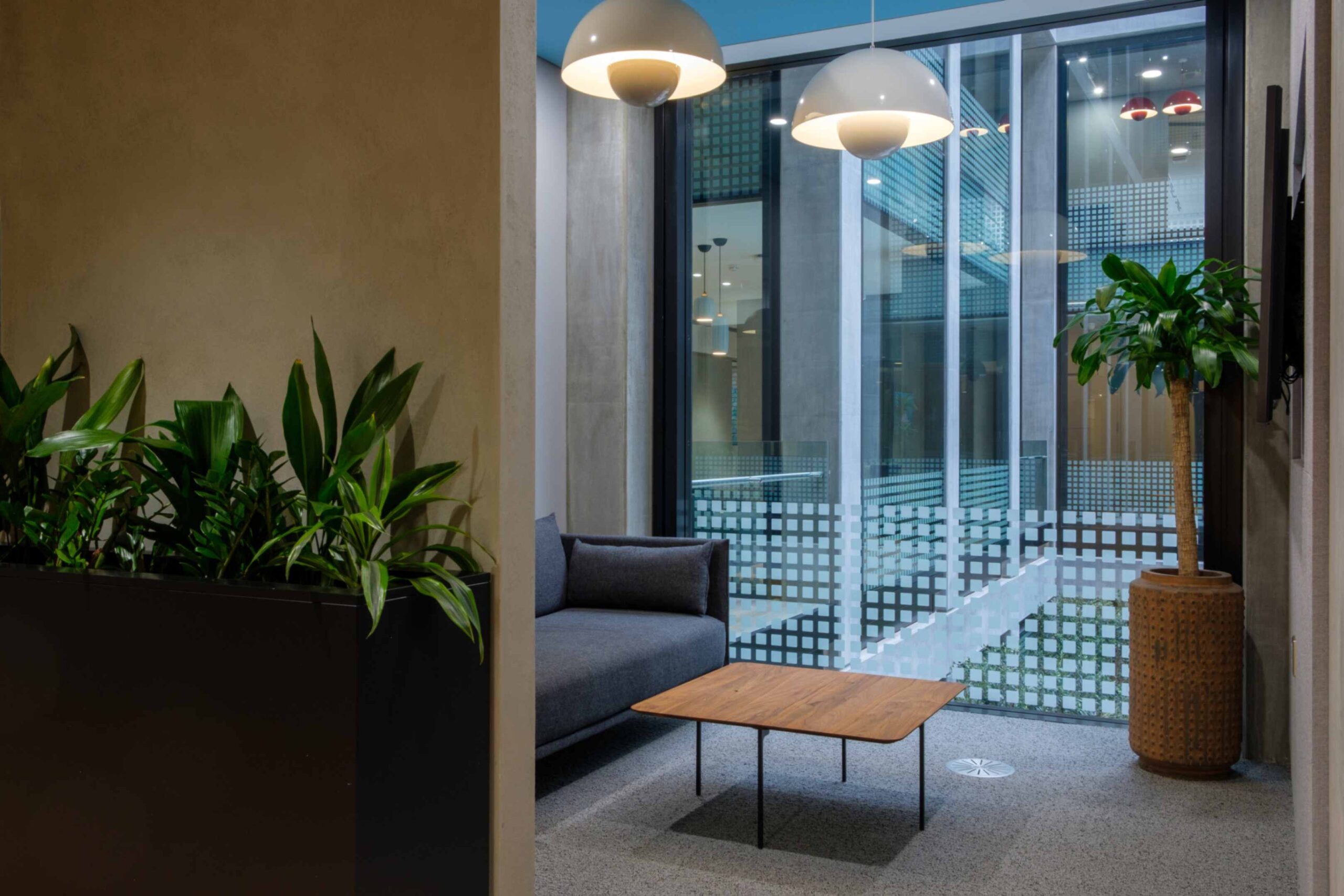Office Design For Employee Wellbeing
In today’s fast-paced work environment, office design has become a pivotal factor influencing employee well-being and productivity. The concept of biophilia, or the inherent human inclination to connect with nature, has sparked a revolutionary shift in office architecture and interior design.
This shift acknowledges the simple truth that when employees feel good, they perform better. Through this lens, let’s explore how biophilia and employee well-being are shaping the future of office design.
In this blog:
- Natural Elements & Productivity
- The Power of Natural Light
- Plants & Green Spaces
- Materials and Textures
- Conclusion
- FAQ
___________________________________________________________
The Role of Natural Elements in Enhancing Productivity
The Power of Natural Light
Natural light stands as one of the most critical components of biophilic design, significantly affecting both physical health and psychological well-being.
Studies consistently show that exposure to natural light during the workday can significantly reduce symptoms of eye strain, headaches, and even depression, leading to higher productivity and job satisfaction. Offices designed with large windows, skylights, and open spaces that allow sunlight to permeate deeply into the work areas not only energise employees but also reduce the reliance on artificial lighting, which can have negative effects on mood and alertness.

Incorporating Plants and Green Spaces
Integrating plants and green spaces into office designs does more than just beautify the environment. Plants are known to improve air quality by removing toxins and increasing oxygen levels, which can enhance cognitive function and reduce illness-related absences.
The presence of greenery and natural elements in the workplace has been linked to lower stress levels, improved mood, and increased creativity among employees. By creating indoor gardens, green walls, or even simple plant arrangements, offices can become more inviting and stimulating spaces that encourage employees to thrive.

The Impact of Materials and Textures
Choosing materials and textures inspired by nature can further improve the biophilic experience in office environments. Wood, stone, and other natural materials not only add aesthetic appeal but also connect employees to the outdoors, creating a more comforting and less sterile workplace.
Textiles and furnishings that mimic natural patterns and colours can stimulate the senses and foster a more creative and productive work atmosphere. This attention to detail in material selection underscores the importance of a holistic approach to office design, where every element works in harmony to support well-being and job performance.
___________________________________________________________
Conclusion
The future of office design lies in creating spaces that not only meet the functional needs of the workforce but also nurture their mental, emotional, and physical health.
By implementing biophilia and prioritising employee wellbeing, companies can cultivate environments that inspire, rejuvenate, and empower their teams. The shift towards biophilic design reflects a broader understanding of the role that our surroundings play in shaping our daily experiences and overall quality of life at work.
As we move forward, it becomes increasingly clear that thoughtful, nature-inspired office design is more than just a luxury. It is a strategic investment in human capital. By nurturing and creating a deep connection between employees and their natural environment, businesses can unlock their team’s full potential, driving innovation and productivity to new heights.
The future of work is green, and it’s bright, filled with spaces that celebrate the beauty of the natural world and the boundless creativity of the human spirit.
___________________________________________________________
FAQ
How does biophilic design impact employee health?
Can biophilic design help in energy conservation?
Is biophilic design applicable to all types of offices?



Recent Comments